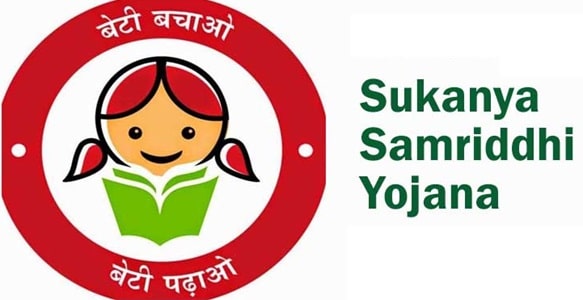Sukanya Samriddhi Yojana happens to be a much known savings scheme supported by the Indian Government. The scheme came up with the purpose of aiding the girl children of the nation. The scheme was launched under the special 2015 campaign, ‘Beti Bachao, Beti Padhao.’ Due to its multiple benefits, the savings scheme soon became much appraised and popular. However, like any other scheme it also carries some disadvantages. Here in this blog we will be talking about both the benefits and drawbacks of the savings scheme.
Advantages of Sukanya Samriddhi Yojana (SSY):
1. Higher Interest Rate:
Sukanya Samriddhi Yojana has a competitive interest rate. Long-term savers benefit from this interest rate, which outperforms savings accounts and fixed deposits. Since my 2022 knowledge update, SSY had 7.6% yearly interest. This return beats many small savings schemes in the market. SSY’s advantages depend on this high interest rate. This attracts investors to this government-backed strategy. High interest rates outperform inflation and increase capital growth.
SSY’s greater interest rate helps develop a huge corpus for the female child’s financial well-being. This high interest rate helps parents save for their daughter’s education, marriage, and other life goals, boosting financial security. In a world with limited investment alternatives, Sukanya Samriddhi Yojana gives optimism with its high interest rates. This option is great for parents that value savings and a bright future for their daughter.
2. Tax Benefits
Sukanya Samriddhi Yojana (SSY) has three tax advantages as an EEE. The initial contribution, interest, and maturity income benefit from this unconventional tax arrangement. The high tax efficiency favors parents who are investing for their daughters’ future.
3. Long-term Investment:
When a girl reaches 21, Sukanya Samriddhi Yojana (SSY) matures to promote long-term investment. This unique feature ensures funds develop when needed for education and marriage. SSY’s long-term investment approach complements parents’ and guardians’ financial aspirations for their daughter. To guarantee the corpus can meet adult financial obligations, SSY encourages rigorous and disciplined savings at 21.
4. Financial Security for the Girl Child:
Sukanya Samriddhi Yojana (SSY) protects girls’ money. It lets parents carefully build a large corpus for their daughter to meet her future financial demands. SSY’s main goal is girl financial stability and achievement. Parents and guardians may trust SSY to help them maintain financial stability, which is increasingly crucial.
The strategy stresses long-term savings for financial security. Years of meticulous accumulation have built a financial fortress for emergencies. SSY helps families finance school, professions, and marriage.
5. Flexible Deposit Options:
Special deposit flexibility is offered by Sukanya Samriddhi Yojana. Parents may deposit between minimum and maximum sums. Due of its flexibility, SSY is accessible to individuals of all socioeconomic backgrounds.
SSY’s deposit flexibility is significant. SSY helps parents and guardians invest according to their finances and goals, unlike fixed financial solutions. SSY can personalize its services to each family’s objectives.
6. Small Initial Investment:
With a little initial commitment, SSY accounts are accessible to many income levels. This key system element encourages parents to invest early in their daughter’s future.
The SSY minimum deposit is intentionally low. The government makes this accessibility feature so families from varied economic backgrounds may join without financial burden. Since SSY sets the barrier low, low-income parents may easily start financial planning for their daughter.
7. Government-Backed:
The government-backed Sukanya Samriddhi Yojana (SSY) savings scheme is safe and trustworthy. With governmental clearance, investors may trust their money. The government backs and manages SSY, ensuring its stability. Investors feel safe since the system has top-level backing.
8. Compounding Benefits:
SSY’s annual compounding for interest is a potential financial method. This powerful compounding effect yields interest on both the principal and prior years’ interest. Investment growth may be spectacular and maintained via compounding.
Annual compounding accumulates investment money like a snowball. This happens because last year’s interest becomes next year’s principal. Therefore, interest is computed on both original cash and accumulated earnings.
9. No Maximum Limit:
SSY requires a minimum deposit but no maximum investment. Wealthy people desire to save more profit from this absence of a cap. It is appreciated that SSY has no maximum limit since it accommodates investors of all financial capacities. This feature is excellent for wealthy parents who wish to safeguard their daughter’s future. It lets customers put a lot of their extra money in the program, boosting savings.
People may consciously save for life events like marriage or schooling without a maximum limit. It promotes SSY as a reliable and versatile tool for ambitious financial objectives.
After reviewing the Sukanya Samriddhi Yojana’s merits, we must consider its drawbacks:
Disadvantages of Sukanya Samriddhi Yojana (SSY)
1. Stringent Lock-in Period:
The Sukanya Samriddhi Yojana (SSY) promotes long-term financial planning, which may hinder cash-seeking investors. SSY’s unique feature of locking up funds until the female child reaches 21 may not suit everyone’s financial goals.
The lock-in period of SSY may disadvantage those who need cash immediately. A female child’s financial goals may not meet the ban on cash withdrawals before 21. If they experience financial issues or require non-scheme funding, they may be constrained.
2. Restricted to Girl Child:
Sukanya Samriddhi Yojana (SSY) only helps females financially, which has consequences. This program excludes homes with only male children due to its gender-specific restriction. SSY empowers females, although its gender exclusivity may hinder.
Gender-specific SSY promotes gender equality and fights inequality. History and present issues include education and financial security for women. By concentrating on females, SSY hopes to bridge these gaps and empower them financially.
3. Penalties for Non-Compliance:
Sukanya Samriddhi Yojana (SSY) requires minimum deposits to operate. Accounts without a minimum deposit in a year may be terminated. Financially struggling persons may find it difficult to reactivate SSY accounts due to a penalty.
The negative is when unexpected financial circumstances prevent someone from making the required deposit in a given year. This may lead to SSY account deletion. Penalties increase the cost of reactivating these accounts.
4. Limited Investment Options:
Unique among investments, Sukanya Samriddhi Yojana (SSY) has constant interest rates. This set interest rate is stable and predictable, but the benefits may not rise with inflation. Market-linked investors seeking higher returns may not appreciate this limited investment.
5. Uncertainty in Future Interest Rates:
Government adjusts Sukanya Samriddhi Yojana (SSY) interest rates. Historical rates may be competitive, but interest rates fluctuate unexpectedly. These changes might significantly impact SSY investment performance.
SSY’s variable interest rates mean they’re not fixed throughout the transaction. Government regularly analyzes and adjusts them. This helps investors benefit when interest rates climb. Rates falling may affect investment yields.
6. Impact on Other Government Benefits:
SSY accounts may influence eligibility for government scholarships and subsidies. This drawback should be considered before creating an SSY account.
7. Lack of Liquidity in Emergency Situations:
The Sukanya Samriddhi Yojana (SSY) aims to support girls’ long-term financial needs. However, the scheme’s lock-in period and penalties for non-compliance may make accessing these assets difficult in a financial emergency.
The lock-in period in SSY is crucial to encouraging disciplined and long-term savings. Funds are committed to the plan until the female child is 21 and cannot be withdrawn without penalty. This lock-in time protects the female child’s financial future, but it may not coincide with a financial emergency. SSY’s lock-in clauses may limit urgent funding for medical costs or financial emergencies.
8. No Nomination Facility:
Sukanya Samriddhi Yojana (SSY) accounts are important financial instruments but do not allow nominations. This difference might be important when the account holder experiences unforeseen occurrences. Transferring the account without a nomination facility may be difficult.
Conclusion
Sukanya Samriddhi Yojana is the admixture of both the advantages and the cons. However, undermining the disadvantages of the scheme would not be proper. As you check the lock in period and restrictions, you can make your selection looking at both sides of the coin. According to the requirement of your girl, you can make your decisions.
Anantha Nageswaran is the chief editor and writer at TheBusinessBlaze.com. He specialises in business, finance, insurance, loan investment topics. With a strong background in business-finance and a passion for demystifying complex concepts, Anantha brings a unique perspective to his writing.



